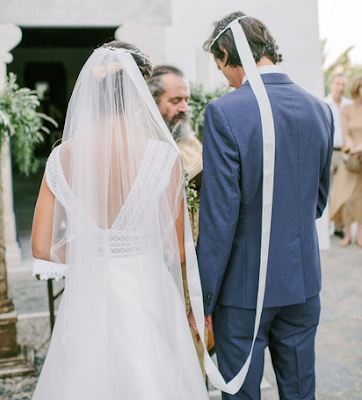There’s no lack of traditions when it comes to Greek weddings. In fact, tradition is core to how and why things are done. But be aware there are Greek wedding traditions and Greek Orthodox traditions. Sometimes they may seem the same, but for those who are part of the Eastern Orthodox Christian Church, they don’t have much say in their wedding plan because they have to follow the Greek Orthodox liturgy. Among these Greek Orthodox rituals is a custom that goes back to the 11th century–the Greek orthodox wedding crown. This ancient Greek cultural ritual is considered one of the most important among the Greek Orthodox wedding traditions.
Greek Orthodox wedding crowns
Traditionally these martial crowns also known as Stefana (crown in Greek) were crafted from flowers, foliage, or even precious metals. Then and now they represent signs of wisdom, justice, integrity, glory, and honor. Today’s Greek Orthodox wedding crowns are available in a number of styles and during the ceremony they are presented on the Stefana tray along with sugar coated almonds (koufeta).
Greek Stefana crowns ritual
Within the Greek Orthodox wedding proceedings, the crowning ceremony typically takes place after the betrothal (ring exchange). No vows are spoken by the couple to one another because their commitment is to God to care for and love each other unconditionally. For this reason, instead of facing each other, they face the altar (representing God). Instead of vows, the Stefana crowns placed on the heads of the bride and groom during the wedding ceremony mean they are married.
The Stefana crown ritual starts with the priest blessing the crowns in the name of the Father, Son and Holy Spirit. Then he places one crown on the bride and the other on the groom. This crowning symbolizes that they are the King and Queen of their household which they will oversee with love and faith. Then, the Koumbaros (the best man or wedding sponsor) swaps the crowns back and forth between the bride and groom three times as the couple walks around the altar three times to signify their marital journey through life together. Finally, the crowns are tied together with a ribbon to symbolize the couple's union. The crowns represent wisdom, justice, integrity, glory and honor. Finally, the priest blesses the couple before removing the crowns.
Thanks so much for being part of our success.
Photo credits: Stefana Margaret, Stefana Margaret



